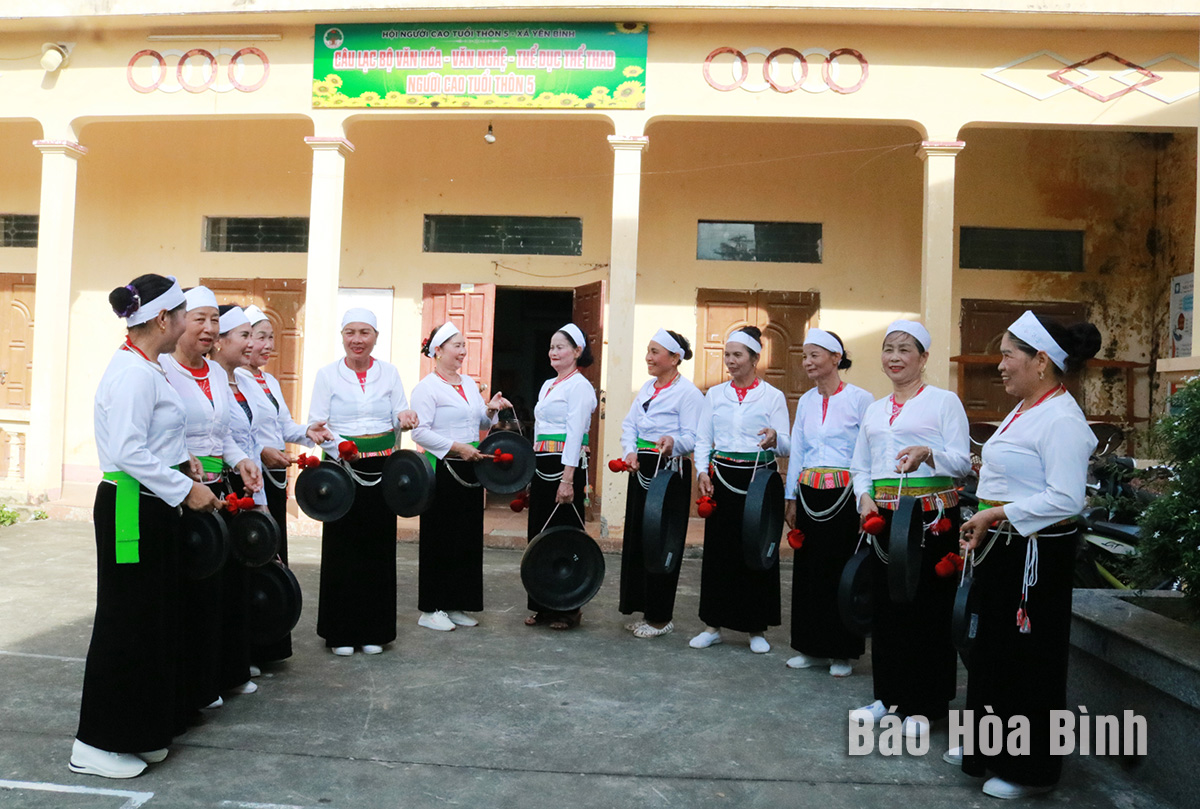In many major cultural events in Hanoi, the sound of the Muong people's gongs has become a special tone, contributing to the unique harmony that praises the cultural values accumulated over thousands of years along with the sacred soul of the capital city.
Members of the culture, arts, and sports club
for the elderly in Hamlet 5, Yen Binh commune, Hanoi's Thach That district
regularly practice playing Muong gongs, contributing to the preservation of the
nation’s cultural heritage.
Cultural harmony in Thang Long - Hanoi
Women dressed in traditional Muong costumes
stand in two long rows, playing gongs to welcome delegates and visitors
attending the 70th anniversaryof theLiberationDay of Hanoi
(October 10, 1954-2024) and Thach That district. The sound of the gong echoed,
harmonising with the the enduring spirit of the ancient Thang Long capital.
For many years, this image and sound have been
familiar at important events in Thach That district, and it is also a
performance deeply rooted in ethnic identity that the locality has chosen to
participate in major cultural events in Hanoi.
That Muong gong troup gathers dedicated members
of the culture - arts - sports club for the elderly in Hamlet 5 of Yen Binh
commune, which was established in October 2010, two years after Yen Binh
commune (formerly part of Luong Son district, Hoa Binh province) was merged
into Thach That district and the entire Ha Tay province was merged into Hanoi.
The club was founded out of the passion of those who love the Muong gong
culture. For nearly 14 years, this activity has connected members and created a
distinct identity for the club.
The Muong people make up the majority of ethnic
minority people in Thach That, which account for 5.68% of the local population.
Sharing a common passion, those who love the Muong gong culture have brought the
sound of the instrument to cultural events in the capital city such as the
Hanoi Autumn Festival 2023 and the Hanoi Tourism Festival 2024, among others.
At those events, the sound of the Muong gong has
proven its attractiveness, which resounded to praise the capital city, where
the essence of the national culture converges.
Efforts
made for Muong gongs to resound amidst Hanoi's cultural diversity
In Ba Vi district, where there are seven
communes with ethnic minorities, the Muong ethnic group accounts for a high
rate with over 26,160 people. After many efforts, 59 cultural preservation
teams were established in these communes.
Specifically, for Muong culture, these teams
have regularly organised Muong gong practicing and performing programmes,
collected folk dances and songs of Muong people, and actively participated in
cultural and art exchange events. Notably, in early 2024, the district
established a traditional culture and arts club of ethnic groups.
According to president of the club Nguyen The Vinh,
the club’s establishment promises to create more prominent marks in preserving
and promoting cultural values of Ba Vi district.
He emphasised the need to tap into cultural
values in a way that is closely aligned with the locality’s tourism development
strategy.
like Ba Vi, districts with a large number of
ethnic minority people are heading in the right direction by leveraging
cultural values linked to tourism development. This is a right approach for the
localities to become part of the development of the capital city, using
cultural values as a core factor for integration and as a motivation for
socio-economic development.



